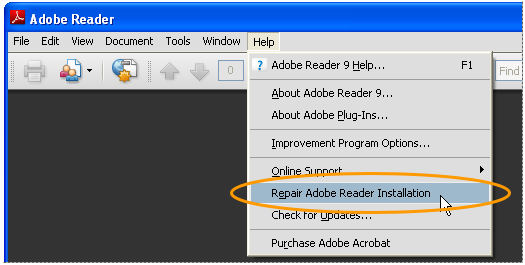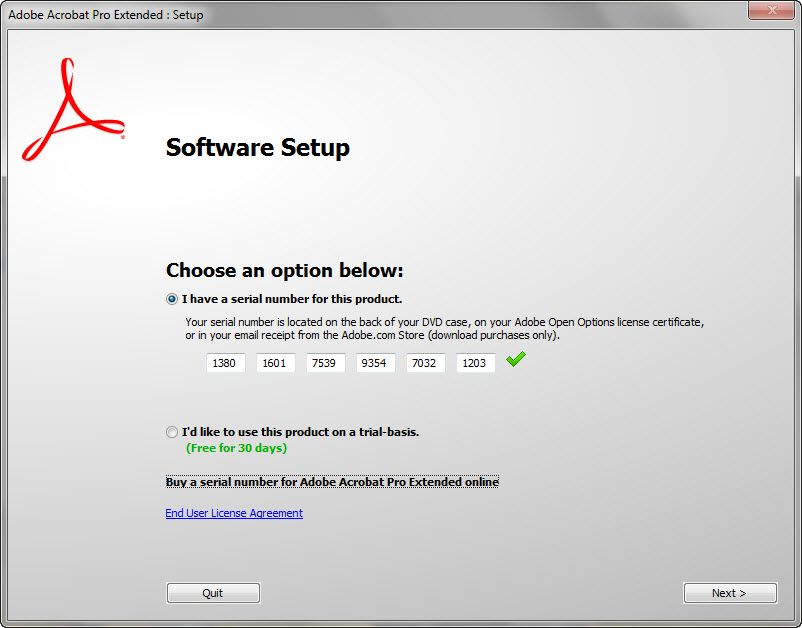

- ADOBE ACROBAT PRO 9 HELP PDF
- ADOBE ACROBAT PRO 9 HELP INSTALL
- ADOBE ACROBAT PRO 9 HELP CODE
- ADOBE ACROBAT PRO 9 HELP PASSWORD
They are all found in: /Applications/Adobe Acrobat 9 Pro/Adobe Acrobat Pro.app/Contents/MacOS/SelfHealFiles/AdobePDFPrinter/Īfter you’ve copied them to their places, you can run Adobe install script: Library/Printers/PPDs/Contents/Resources/en.lproj/ADPDF9.PPD
ADOBE ACROBAT PRO 9 HELP PASSWORD
Now is the truly ridiculous part: if those files and keys aren’t found Acrobat ask for an administrator password and then proceed to write them in current users ~/Library/Preferences! What your users don’t know is they can click Cancel a couple times and it will still write them out, but your they’ve already called you to remote in and authenticate them – you lose! Why Adobe?! WHY!?! Asking for an admin password when you’ll just write it to ~/Library/Preferences? These next keys really make it complain if it can’t find them, and yes even if you don’t use the plugin it looks for WebBrowserUsePath, so make sure it’s there, and NoViewerSelfHealNeeded gets a new date put after it for every release! Wow neato, a fun easter egg hunt, thanks Adobe!ĭefaults write /Library/Preferences/.90.sh "NoViewerSelfHealNeeded Dec 21 2009" -bool TRUEĭefaults write /Library/Preferences/ WebBrowserUsePath -string "file://localhost/Applications/Adobe%20Acrobat%209%20Pro/Adobe%20Acrobat%20Pro.app/"ĭefaults write /Library/Preferences/ AdobePDFDriver -string "file://localhost/Applications/Adobe%20Acrobat%209%20Pro/Adobe%20Acrobat%20Pro.app/" Rm -rf "/Library/Internet Plug-Ins/ugin" Ĭp -R "/Applications/Adobe Acrobat 9 Pro/Adobe Acrobat Pro.app/Contents/MacOS/SelfHealFiles/Library/Internet Plug-Ins/ugin" "/Library/Internet Plug-Ins/" Make sure you copy in the new Acrobat Internet-Plugin if the user is using that:

ADOBE ACROBAT PRO 9 HELP CODE
Then you find your “standard” users without admin privileges are getting bothered by Adobe’s SelfHeal BS.įew things going on here that I’ll try and explain, the code formatting should be copy paste-able check it in a text editor, but all line breaks should be preserved.

So you figure out all the files with loggen, Tracker, fseventer, or whatever your tool, then build your own package with Iceberg.

You can tweak the image at any time by using the Touchup Object Tool.So, if you deploy Acrobat Pro to a corporate environment you already know what an aggravating experience it is to try and deploy updates to Adobe products. Once satisfied, you can switch over to the Hand Tool and click on the page to deselect the image. Once the image is placed, it remains selected, scalable and moveable with the Touchup Object Tool. png file to take advantage of the file format's transparency capabilities. Select Place Image and navigate through your file system for the desired image file.įor this example, I used a. THERE you will find the Place Image command. Your cursor will become a black arrow with a small square off to its side. With your document open, and with the spot you wish to add the image in your view panel, switch over to Acrobat's Touchup Object Tool (it's the right-most tool on the Advanced Editing Toolbar). But digging through Acrobat's menus doesn't uncover a Place command either.Īcrobat 9 Professional does have a Place command, but you won't find it under any menu. InDesign calls the command required to import an image onto a page 'Place'. How can this be done? There is an Export command under Acrobat's File menu, but no Import.
ADOBE ACROBAT PRO 9 HELP PDF
Without the original document, you'll need to edit the PDF file itself. Just re-convert to PDF with the image in place and your work is done. If the original document were at hand, you could open it up with the file's native application and import a new graphic where needed. The source document is not available, but there is a last minute edit needed.


 0 kommentar(er)
0 kommentar(er)
